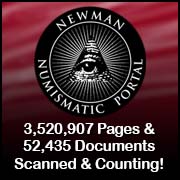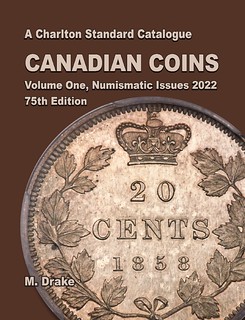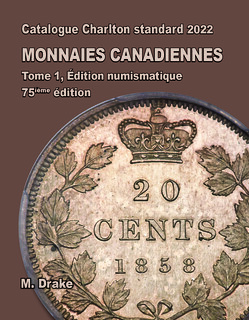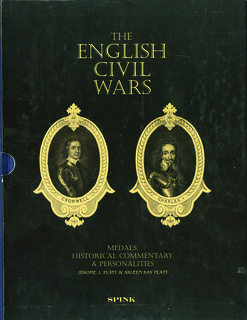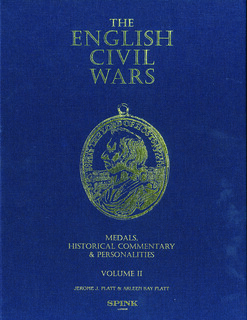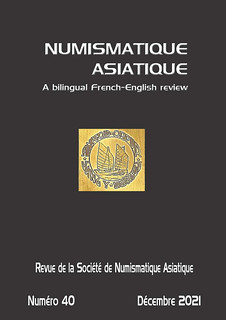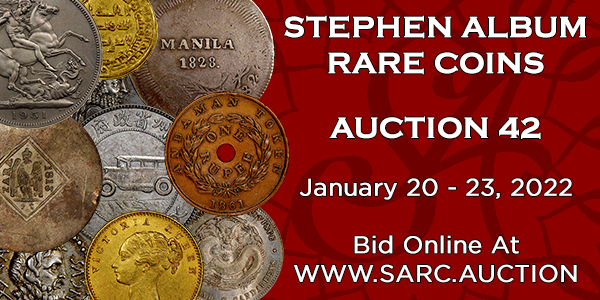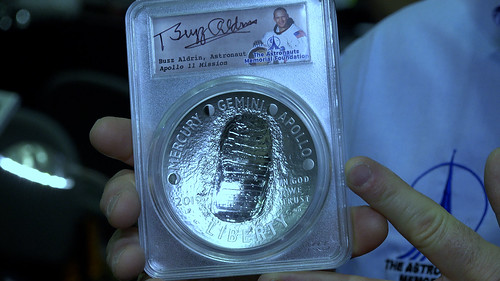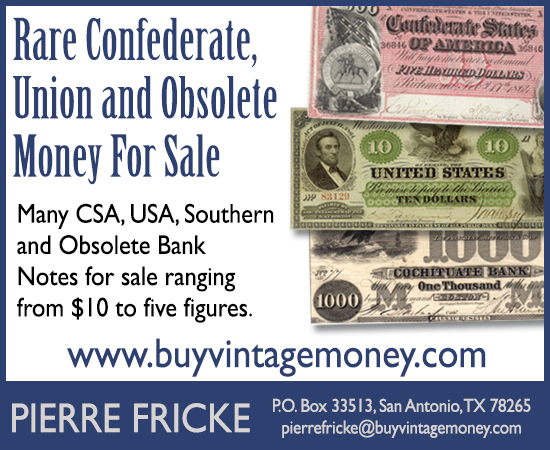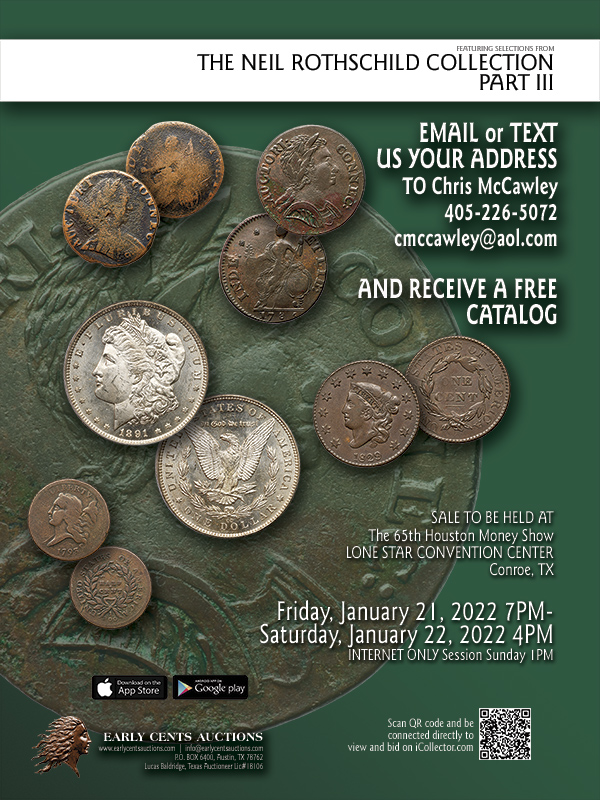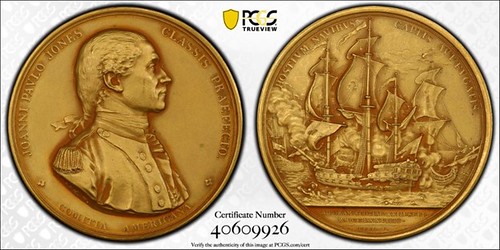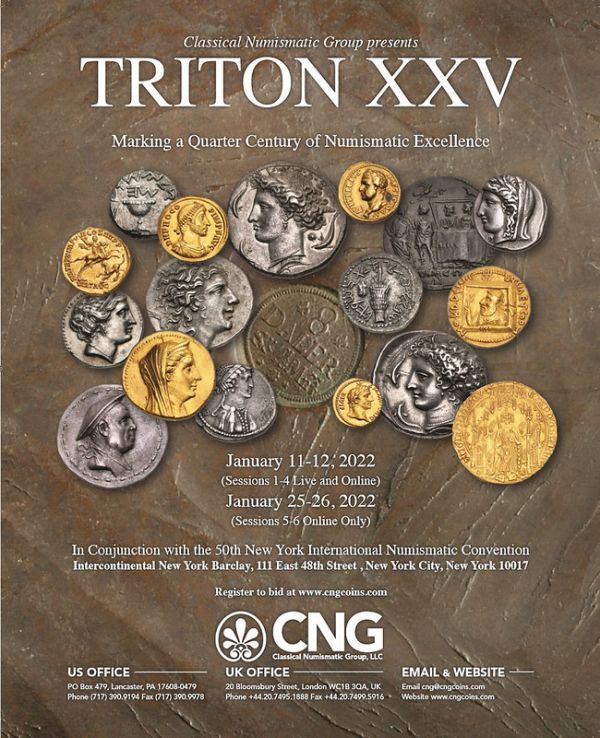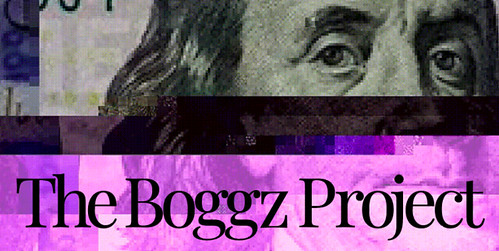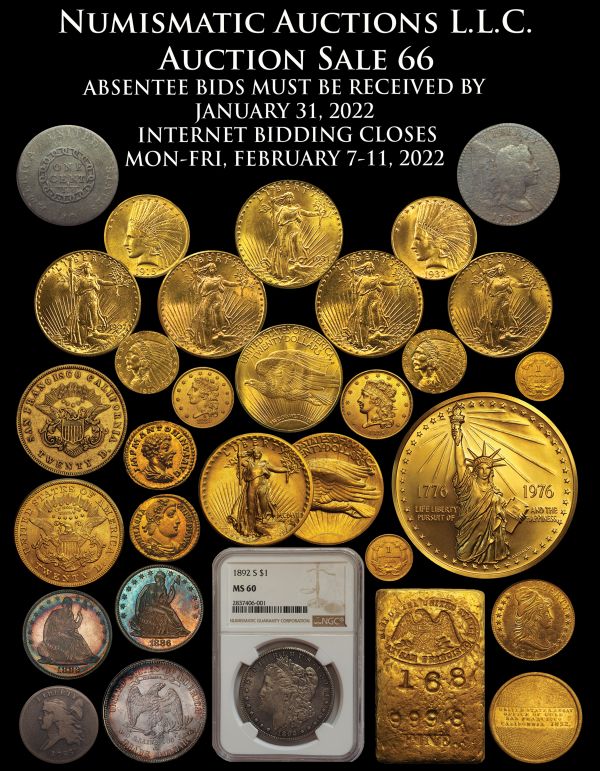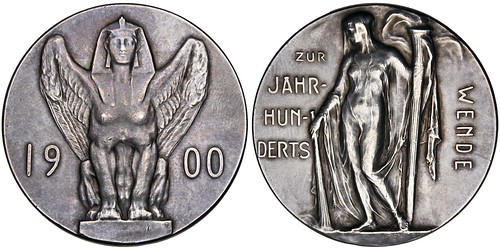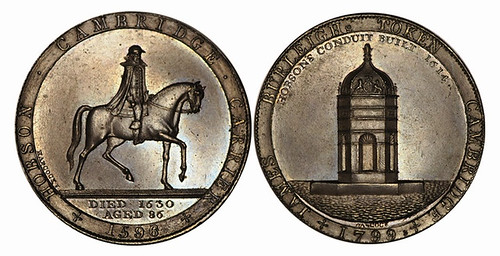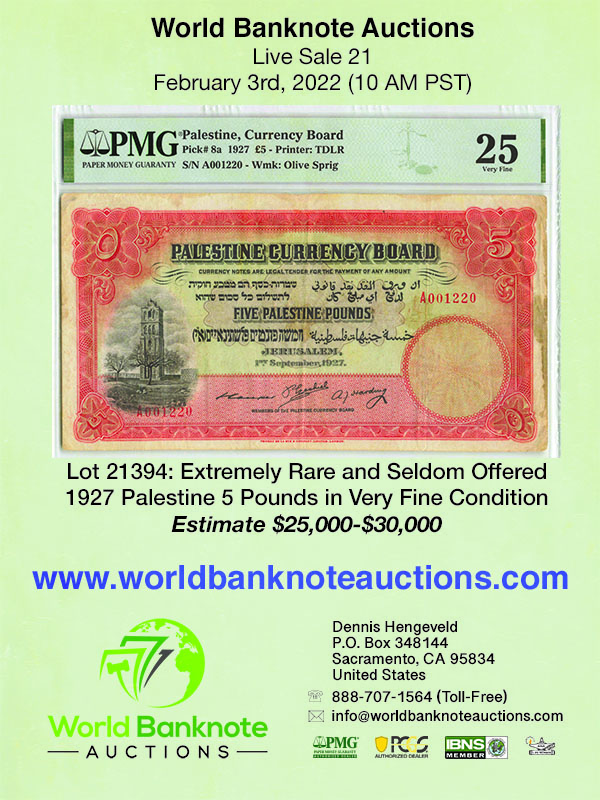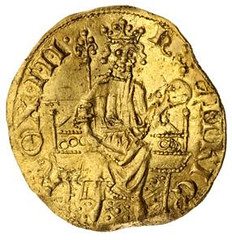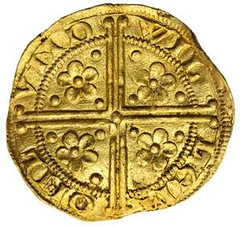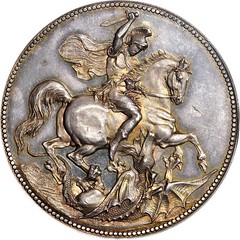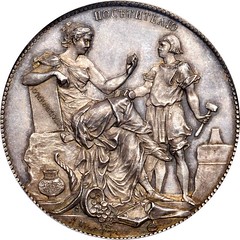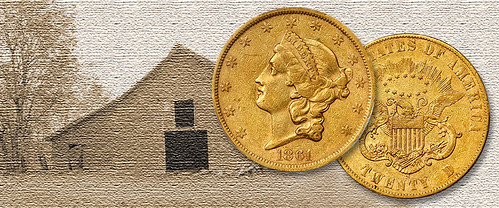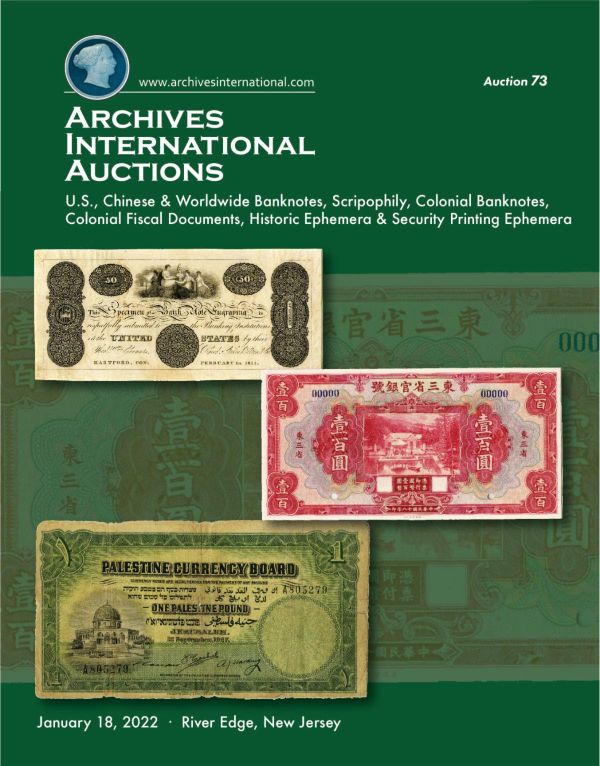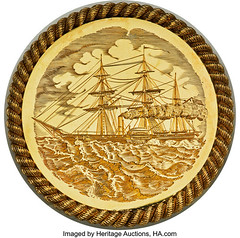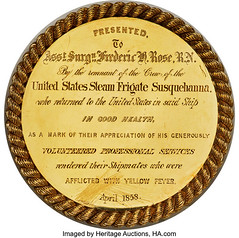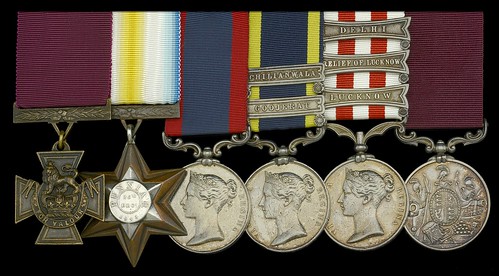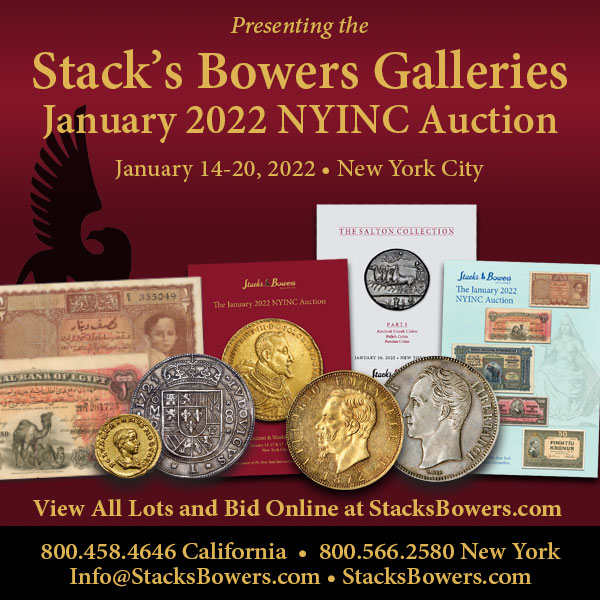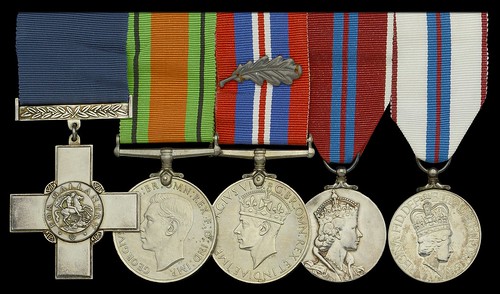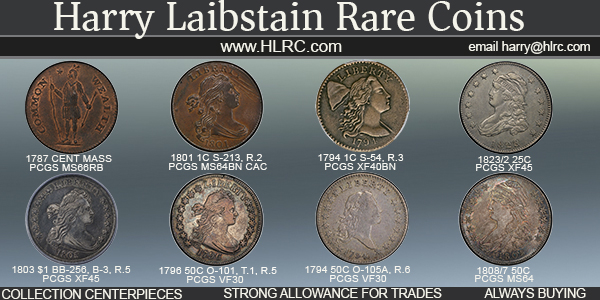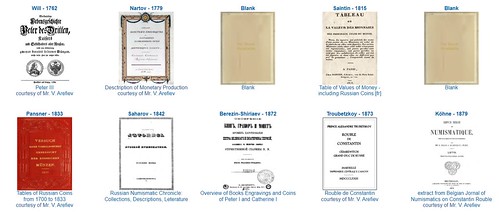
Visit our NBS Sponsors


About UsThe Numismatic Bibliomania Society is a non-profit association devoted to the study and enjoyment of numismatic literature. For more information please see our web site at coinbooks.org SubscriptionsThose wishing to become new E-Sylum subscribers (or wishing to Unsubscribe) can go to the following web page link MembershipThere is a membership application available on the web site Membership Application To join, print the application and return it with your check to the address printed on the application. Print/Digital membership is $40 to addresses in the U.S., and $60 elsewhere. A digital-only membership is available for $25. For those without web access, write to: Charles Heck, Treasurer AsylumFor Asylum mailing address changes and other membership questions, contact Chuck at this email address: treasurer@coinbooks.org SubmissionsTo submit items for publication in The E-Sylum, write to the Editor at this address: whomren@gmail.com BUY THE BOOK BEFORE THE COINSale CalendarWatch here for updates! |
- WAYNE'S WORDS: THE E-SYLUM JANUARY 16, 2022
- KOLBE & FANNING AUCTION SALE 162 SELECTIONS
- NEW BOOK: AMERICAN SILVER EAGLES, 4TH EDITION
- NEW BOOK: CHARLETON CANADIAN COINS 75TH ED.
- NEW BOOK: LE FRANC D'AUGUSTIN DUPRé
- NEW BOOK: OUR LADY OF THE CONCEPTION
- BOOK OFFER: THE ENGLISH CIVIL WARS
- RAFAEL TAULER FESSER BOOKS NOW ONLINE
- NUMISMATIQUE ASIATIQUE DECEMBER 2021
- MURIEL ELIZABETH EYMERY (1966-2022)
- BOSBYSHELL LETTER ON CRACKED COIN PRESSES
- VIDEO: ASTRONAUT COMMEMORATIVE COINS
- SUPPORT SOUGHT FOR BOOKS ON FRENCH ESSAYS
- THE ALTDORF EMBLEMATA BOOK
- QUERY: COIN PRINTING BLOCKS
- GILT JOHN PAUL JONES MEDAL
- NOTES FROM E-SYLUM READERS: JANUARY 16, 2022
- MAYA ANGELOU QUARTER NEWS COVERAGE
- J.S.G. BOGGS ESTATE TO ISSUE NFTS
- VOCABULARY TERM: HANDCUT, HAND ENGRAVING
- NUMISMAGRAM SELECTIONS: JANUARY 2022
- NUMISMATIC AUCTIONS SALE 66 CONDER TOKENS
- BADGER FINDS ROMAN COIN HOARD IN SPAIN
- A NEW GOLD PENNY OF HENRY III
- THE MIKHAILOVICH COLLECTION
- PAQUET REVERSE TWENTY FOUND UNDER BARN
- COLLECTING SILVER EAGLES
- DR. FREDERICK H. ROSE GOLD MEDALS
- INDIAN MUTINY MEDALS
- LONDON BLITZ GEORGE CROSS
- 1972 DEMOCRATIC CONVENTION COIN
- THE HISTORY OF INFLATION
- FEATURED WEB SITE: NUMISTIKA
Click here to read the thin version on the web
Click here to subscribe
Click here to access the complete archive
To comment or submit articles, reply to whomren@gmail.com
Content presented in The E-Sylum is not necessarily researched or independently fact-checked, and views expressed do not necessarily represent those of the Numismatic Bibliomania Society.
WAYNE'S WORDS: THE E-SYLUM JANUARY 16, 2022
 No new subscribers this week.
We now have 6,743 subscribers.
No new subscribers this week.
We now have 6,743 subscribers.
Thank you for reading The E-Sylum. If you enjoy it, please send me the email addresses of friends you think may enjoy it as well and I'll send them a subscription. Contact me at whomren@gmail.com anytime regarding your subscription, or questions, comments or suggestions about our content.
This week we open with selections from the upcoming Kolbe & Fanning literature sale, four new books, five new ebooks, a periodical, updates from the Newman Numismatic Portal, and more.
Other topics this week include American Silver Eagles, engraver Augustin Dupre, cracked coin presses, astronaut coins, French essays, coin printing blocks, the John Paul Jomes Comitia Americana medal, J.S.G. Boggs NFTs, a gold penny of Henry III, and the history of inflation in the U.S.
To learn more about the Pozzi sale, Canadian coins, coins and medals of the Our Lady of the Conception, medals of the English Civil Wars, former ANA Board Member Muriel Eymery, Harvey Stack, emblem books, the new Maya Angelou quarter, the Society of the Cincinnati in Virginia medal, Conder tokens, the Mikhailovich collection, and the Paquet Reverse double eagle found under an old barn, read on. Have a great week, everyone!
Wayne Homren
Editor, The E-Sylum
KOLBE & FANNING AUCTION SALE 162 SELECTIONS
Here are some additional selections from the upcoming Kolbe & Fanning numismatic literature sale. -Editor
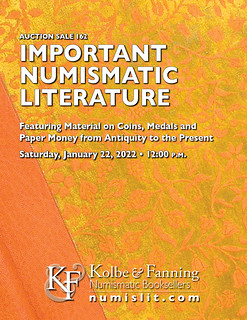 Highlights from the January 22 Sale
Highlights from the January 22 Sale
Kolbe & Fanning Numismatic Booksellers are holding our Sale 162 on Saturday, January 22, 2022. Featuring material from over two dozen consignors, the 438-lot sale encompasses numismatic literature from all times and places.
Some highlights of the sale include:
NEW BOOK: AMERICAN SILVER EAGLES, 4TH EDITION
Dennis Tucker of Whitman Publishing forwarded this press release for the new edition of John Mercanti's book on American Silver Eagles. Thanks! -Editor
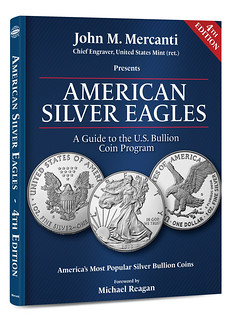 Whitman Publishing announces the release of the expanded and updated fourth edition of American Silver Eagles: A Guide to the U.S. Bullion Coin Program, by John M. Mercanti. The 224-page hardcover book will be available online (including at www.Whitman.com) and from book stores and hobby shops nationwide in March 2022. Before then it can be preordered online. The book retails for $29.95.
Whitman Publishing announces the release of the expanded and updated fourth edition of American Silver Eagles: A Guide to the U.S. Bullion Coin Program, by John M. Mercanti. The 224-page hardcover book will be available online (including at www.Whitman.com) and from book stores and hobby shops nationwide in March 2022. Before then it can be preordered online. The book retails for $29.95.
More than 600 million American Silver Eagles have been sold since 1986, making them the most popular bullion coins in the history of the United States. The coins are treasured by collectors and investors around the world.
NEW BOOK: CHARLETON CANADIAN COINS 75TH ED.
The new 2022 Charleton Canadian Coins book is available in both English and French versions. -Editor
The 2022-dated Charlton Standard Catalogue of Canadian Coins, which covers numismatic issues, is now available in English and French from Coin & Stamp Supplies (CSS), a division of Trajan Publishing.
NEW BOOK: LE FRANC D'AUGUSTIN DUPRé
Laurent Schmitt provided information about a massive new book on the work of French engraver Augustin Dupré. -Editor
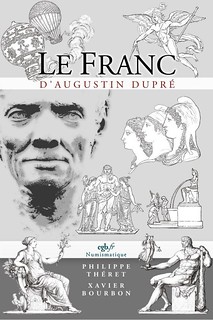 The book is written by Philippe
Théret and Xavier Bourbon with the
support of the association Les Amis
du Franc (ADF).
The book is written by Philippe
Théret and Xavier Bourbon with the
support of the association Les Amis
du Franc (ADF).
The 1,104-page book is written in French with around 5,500 photos.
NEW BOOK: OUR LADY OF THE CONCEPTION
A new book catalogs coins and medals of Our Lady of the Conception of Portugal and Brazil. -Editor
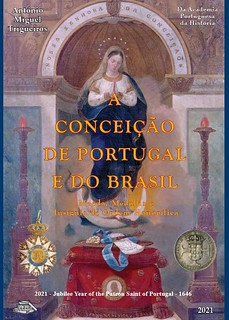 This second book in the series dedicated to the study of the insignia of the former Portuguese Military and Honorific Orders is entitled
This second book in the series dedicated to the study of the insignia of the former Portuguese Military and Honorific Orders is entitled A Conceição de Portugal and Brazil. Moeda, Medalhas e Insígnia Honorífica
(Our Lady of the Conception of Portugal and Brazil. Coins, Medallions and Honorary Insignia), and it was written with the idea of transmitting to present and future generations the work done by past generations, in the emblematic figurations of the Patron Saint of Portugal and of Brazil, Our Lady of the Conception.
In the first 70 pages the book deals with Portugal´s first ever silver commemorative COIN OF THE CONCEPTION, engraved in Paris in 1648 by Jean Warin, the famous chief engraver of the Paris Mint, and minted in Lisbon in the name of king João IV (1640-1656).
Being a revolutionary coin at the time, with engravings full of Marian symbology and a beauty never surpassed in Portuguese numismatics, it would be much later restrike as a medal and worn as an insignia around the neck of officers of the Royal Confraternity of Vila Viçosa.
BOOK OFFER: THE ENGLISH CIVIL WARS
Coincraft in London is making a special offer on the magnificent book by Jerome and Arlene Platt on the medals of the English Civil Wars. -Editor
The English Civil Wars: Medals, Historical
Commentary and Personalities
WITH FREE GENUINE CIVIL WAR PISTOL BALL
RAFAEL TAULER FESSER BOOKS NOW ONLINE
Tauler & Fau have released digital versions of five books on Spanish numismatics. Thanks to Frank Draskovic for passing this along. -Editor
From Tauler&Fau we would like to tribute Mr. Rafael Tauler Fesser, offering for free, all his specialized catalogs. Here you will find the work and experience of a life dedicated to numismatics. We hope that his legacy will be useful to increase the knowledge and dissemination of our passion, numismatics.
NUMISMATIQUE ASIATIQUE DECEMBER 2021
Here are the contents of the latest issue of Numismatique Asiatique. -Editor
Xème ANNIVERSAIRE
Celebrating 40 volumes of Numismatique Asiatique
by Joe Cribb
Pour célébrer les 40 numéros de Numismatique Asiatique
par Joe Cribb
MURIEL ELIZABETH EYMERY (1966-2022)
American Numismatic Biographies author Pete Smith submitted this article on former ANA Board Member Muriel Eymery. -Editor
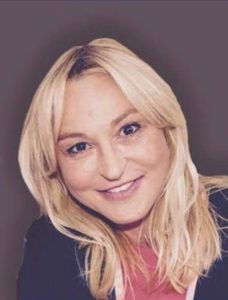 Muriel Eymery joined the American Numismatic Association in 2005 as member 3184823. She represented international numismatics as a member of the ANA board for 2019 to 2021. With seven open positions on the ANA Board, she finished eighth in her bid for reelection in 2021.
Muriel Eymery joined the American Numismatic Association in 2005 as member 3184823. She represented international numismatics as a member of the ANA board for 2019 to 2021. With seven open positions on the ANA Board, she finished eighth in her bid for reelection in 2021.
Eymery received an MBA in finance from Baruch College and master's degree from School of Advanced International Studies at Johns Hopkins University. She spoke English, French, German, Portuguese and Spanish. She had dual American and French citizenship and lived in Hong Kong.
BOSBYSHELL LETTER ON CRACKED COIN PRESSES
The latest addition to the Newman Numismatic Portal is a letter from Philadelphia Mint Coiner O. C. Bosbyshell about cracked coin presses. Project Coordinator Len Augsburger provided the following report. -Editor
Cracked Dies? No, Cracked Presses
Most collectors, especially of earlier American coinage, are quite familiar with die cracks as evident on many examples. Die cracks are often the key to die attribution and reveal a constant struggle with die preparation and usage in the early days of the U.S. Mint. An 1882 letter, recently transcribed by Newman Portal, indicates that cracks might also be found in the Mint presses. Philadelphia Mint Coiner O. C. Bosbyshell reported on July 25 to the Director A. Louden Snowden that cracks were present in the arch of press no. 10 in at least two places, and recommended a replacement. Bosbyshell went on to note that the damage to the massive cast iron frame was not repairable. Such simply represented the cost of coining, and there was nothing more to do than scrap the tons of metal that formed the press arch.
Image: Bosbyshell's diagram noting the crack locations
Link to Bosbyshell letter regarding cracked presses:
https://archive.org/details/press10crackedtwoplaces18820725/mode/2up
VIDEO: ASTRONAUT COMMEMORATIVE COINS
These are selections from the David Lisot Video Library that feature news and personalities from the world of coin collecting. David has been attending coin conventions since 1972 and began videotaping in 1985. The Newman Numismatic Portal now lists all David's videos on their website at:
https://nnp.wustl.edu/library/multimediadetail/522852
Here's one on commemorative coins supporting the Astronauts Memorial Foundation. -Editor
COOL! Astronaut Coins Available at FUN Coin Convention 2022.
VIDEO: 8:53.
SUPPORT SOUGHT FOR BOOKS ON FRENCH ESSAYS
Laurent Schmitt submitted this information on Amis des Auteurs Numismates (Friends of Numismatic Authors), which is in the process of being created. The group is planning an initial project to develop new catalogues on French Essays in the 19th Century (1803-1870) from Consulate to Napoleon III. -Editor
Fellow collectors and numismatists,
French monetary essays are attracting growing interest from collectors and investors around the world, and this is reflected by increasingly high prices, with some gold essays achieving six-figure record prices.
The reference catalogs for the field of modern French essays are somewhat old. Victor Guilloteau's work dates from 1942, Mazard's from 1965 and 1969, and Victor Gadoury's from 1989. The most recent work by Michel Taillard & Michel Arnaud (2014) covers the last period of 1870 to 2001.
In addition, there are important monetary archives that have not been exploited by the authors of these catalogs. Two recent books, Le Franc les Monnaies les Archives (2019) and Le Franc d'Augustin Dupré of which Philippe Théret is the principal author, shows the wealth of the information contained in the archives.
THE ALTDORF EMBLEMATA BOOK
John Sallay submitted this article on an interesting early numismatic book. Thanks! Great book. -Editor
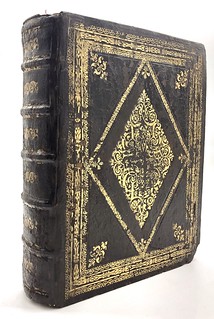 I recently acquired an early 17th century book that I thought might be of interest to E-Sylum readers, since it is fundamentally numismatic and not generally seen in the numismatic book trade. The title begins Emblemata Anniversaria Academiae Noribergensis, Quae Est Altorffi, which translates roughly from Latin as
I recently acquired an early 17th century book that I thought might be of interest to E-Sylum readers, since it is fundamentally numismatic and not generally seen in the numismatic book trade. The title begins Emblemata Anniversaria Academiae Noribergensis, Quae Est Altorffi, which translates roughly from Latin as Anniversary Emblems of the Nürnberg Academy which is at Altdorf…
It was published by Abraham Wagenman in Nürnberg in 1617, and is large octavo (8.2 x 6.5) with 540 numbered pages, plus 8 introductory pages and 44 index pages.
This example retains its original gilt leather binding, somewhat showing its age. The circa 1643 Bib: Nor: circular bookplate on the lower right corner of the title page indicates that it was once in the Bibliotheca publica Noribergensis, the Nürnberg city library. Before purchasing the book, I confirmed with the successor Stadtbibliothek Nürnberg that this was a deaccessioned duplicate copy.
QUERY: COIN PRINTING BLOCKS
Dr. Jesse Kraft is Assistant Curator of American Numismatics at the American Numismatic Society. -Editor
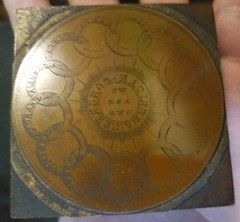 Someone recently reached out to the ANS with these printing blocks (thinking they were coining dies). I have no idea where they were used. The Continental dollar resembles a Dickeson copy more than a genuine piece, and the half cent is badly corroded, but the overlapping coins are distinctive enough that someone may recognize them. Any help would be appreciated.
Someone recently reached out to the ANS with these printing blocks (thinking they were coining dies). I have no idea where they were used. The Continental dollar resembles a Dickeson copy more than a genuine piece, and the half cent is badly corroded, but the overlapping coins are distinctive enough that someone may recognize them. Any help would be appreciated.
GILT JOHN PAUL JONES MEDAL
Robert C Whitehead submitted this article on an unusual gilt John Paul Jones medal. Thanks! -Editor
The travel and visitation restrictions during 2020 and 2021 for Covid made life difficult for all of us. Perhaps out of boredom, or the need to scratch that collecting itch, I started a collection of Comitia Americana medals. On-line purchasing for many of us was the only way to continue collecting. Along the way I grabbed this unusual John Paul Jones medal mainly because it just looked different than anything else I had seen, and sometimes these prove to be gems. It turned out to be a Mint issued gilt medal that so far is a 1/1 with PCGS and I believe none recorded by NGC.
NOTES FROM E-SYLUM READERS: JANUARY 16, 2022
More on Harvey Stack
Peter Preston-Morley of Dix Noonan Webb writes:
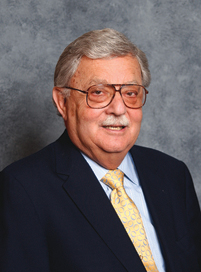
"Superb range of tributes to Harvey Stack, I first met him in 1976 and he was unfailingly courteous to me from day one, a real numismatist of the old school with a prodigious memory."
22-year Stack's veteran David Thomason Alexander writes:
"Like many E-Sylum readers, I was saddened to read of the death of Harvey G. Stack, my boss from 1990 until the disappearance of the original Stack's firm through the mergers of the early 2000's. I can testify that he was a one-of-a-kind numismatist and gentleman, just as the original Stack's was a one-of-a-kind numismatic institution. The Stack's did things their way and there was no other! When I arrived in 1990, nearly all cataloging was being done by hand on envelopes and my request for a typewriter was seen as decidedly odd. There was a single computer in the office, belonging to the late Martin Gengerke and reserved solely for setting up the assembled lots for each auction.
"I soon found that Harvey was amazingly loyal to his numismatic professionals, and kept at least three of them on staff even after their health had begun to deteriorate. The Stacks rejected many trends and numismatic fads, notably the 1950-D Nickel spasm and the roll and bag craze of the 1960s; they generally sidestepped the bullion mania of 1979-1981. They categorically rejected numerical grading and slabbing as those innovations swept the marketplace.
"He generally took a remarkably understanding attitude toward fellow dealers who had fallen on hard times, generally working with them to resolve problems, however serious. Woe to that rare individual who might show inappropriate defiance! Harvey valued the name and reputation of Stack's above all things. Years later, following the second merger, I was working at the California offices of a later owner of the company name when a news flash swept across my computer screen, "Great News! The Stack's have rejoined the company!!!" I went to get a cup of coffee and found two young Capifornia types with their organic fruit juice puzzling over the news, "Who are these STACKS they're all talking about!?!" Sic transit gloria...
"Fortunately there can be few numismatists of any experience that are likely to express such bewilderment! There is, instead, the ancient Orthodox Jewish blessing, "May his name be writ large in the Book of Life!""
In an article Bill Gibbs of Coin World wrote:
"Harvey Stack was in the right place at the right time with the right idea as he sat before the U.S. House Banking Committee's Coinage Subcommittee in July 1995 to propose the 50 State Quarters Program, which increased the number of collectible coins issued by the United States Mint. It is ironic that, then and until last week, he was one of the fiercest critics of the Mint for issuing too many coins that it offers at premium prices.
"He loved the hobby and devoted his entire life to numismatics. He hated the idea that a government agency, the United States Mint, intended, in his view, to rip off the numismatic collector once again,
and he was never afraid to let the world know what he thought."
To read the complete article, see:
Monday Morning Brief for Jan. 10, 2022: Remembering Harvey Stack
(https://www.coinworld.com/news/us-coins/monday-morning-brief-for-jan-10-2022-remembering-harvey-stack)
To read the earlier E-Sylum article, see:
HARVEY G. STACK (1928-2022)
(https://www.coinbooks.org/v25/esylum_v25n02a04.html)
Other topics this week include Indian Peace medals, holes through regal portraits, and the longest-lasting denomination. -Editor
THE BOOK BAZARRE
MAYA ANGELOU QUARTER NEWS COVERAGE
The story of the new Maya Angelou quarter was all over media this week. It's always nice to see mainstream coverage of numismatics - here's an excerpt from a New York Times piece. -Editor
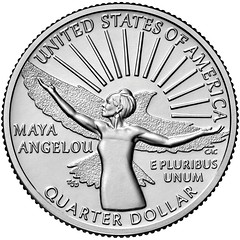 The writer and poet Maya Angelou has become the first Black woman to have her likeness depicted on the quarter, the first in a series of coins commemorating pioneering American women that began shipping this week, the U.S. Mint announced Monday.
The writer and poet Maya Angelou has become the first Black woman to have her likeness depicted on the quarter, the first in a series of coins commemorating pioneering American women that began shipping this week, the U.S. Mint announced Monday.
It is my honor to present our nation's first circulating coins dedicated to celebrating American women and their contributions to American history,
Ventris C. Gibson, the deputy director of the Mint, said in a statement. Maya Angelou,
she added, used words to inspire and uplift.
J.S.G. BOGGS ESTATE TO ISSUE NFTS
In a press release, the estate of "Money Artist" J.S.G. Boggs announced plans to issue exclusive NFT editions of J.S.G. Boggs's work. -Editor
The Estate of J.S.G. Boggs is pleased to announce our partnership with the Boggz Project to create exclusive NFT editions of J.S.G. Boggs's work.
Launched in 2021 by veteran journalists Jeff Koyen and Alexander Zaitchik, the Boggz Project creates and curates original NFT-based art collections that pay homage to J.S.G. Boggs's art and philosophies. The Estate contacted Koyen and Zaitchik as they were preparing their own debut series of Boggs-inspired NFTs, working title Superbills.
VOCABULARY TERM: HANDCUT, HAND ENGRAVING
Here's another entry from Dick Johnson's Encyclopedia of Coin and Medal Terminology. -Editor
Handcut, Hand Engraving. Freehand cutting a metal surface or dies of any kind in the size required, by a human engraver. Hand engraving is in contrast to machine engraving, first developed in the 18th century and widely employed after 1900. Even with the development of diecutting machines, portrait lathes and various engraving machines, the need still continues for hand engraving and handcut dies. Cost and speed are two strong factors in favor of hand engraver, another is the ability to produce a die from a drawing without being required to have a three-dimensional pattern or model. Handcutting dies is the time honored way of diesinking – all dies were handcut in whole or in part prior to 1850 – the number steadily diminishing until only a small portion are handcut in the 20th century. See also ENGRAVING, How to tell Hand Engraving from Machine Engraving.
NUMISMAGRAM SELECTIONS: JANUARY 2022
Jeremy Bostwick at Numismagram forwarded these select highlights from the most recent addition of new material to his website at the beginning of the month. This upload is particularly strong in Art Nouveau and Art Deco medals, along with a focus on exonumia that celebrates the passage of time. For all of his new items, please visit numismagram.com/inventory. -Editor
101874 | GERMANY. New Year silver Medal. Issued 1900. Commemorating the new year and century (38mm, 27.79 g, 12h). By C. Starck & O. Oertel in Berlin. Facing sphinx / ZUR / JAHR- / HUN- / DERTS – WENDE, Hora, in sheer, full-length drapery, standing slightly left, extinguishing one torch and holding another upright. Edge: 990. Strothotte 1900-3; Heidemann 855; Marienburg 7159; GPH 5082. Mint State. Charming gunmetal gray toning, with a delightful matte nature to the surfaces; a few light marks on the reverse are noted for completeness. Compare to a similar example that realized a total of $408 in the recent October 2021 Stack's Bowers CCO. $285.
Offering great Neoclassical artistry, this piece was created for the dawn of the 20th century, seemingly featuring a mythological allegory for the passage of time, Hora. Here, she is depicted in a very sheer drapery, her apparent nakedness revealing the exploits of the previous century, yet her clothing at least obfuscating the events of the new century.
NUMISMATIC AUCTIONS SALE 66 CONDER TOKENS
Steve Davis of Numismatic Auctions LLC passed along this selection of Conder tokens in his upcoming February 2022 sale #66. -Editor
BADGER FINDS ROMAN COIN HOARD IN SPAIN
David Sundman was the first to send in the story of the badger in Spain that uncovered a hoard of Roman coins. Thanks! -Editor
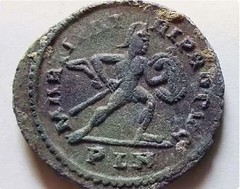 A foraging badger appears to have uncovered the largest stash of Roman coins ever found in northern Spain.
A foraging badger appears to have uncovered the largest stash of Roman coins ever found in northern Spain.
Archaeologists believe the badger inadvertently dug up the stash of 209 coins dating from the 3rd to 5th centuries AD that had fallen into a hole close to its sett in a cave near the village of Bercio in Asturias.
A NEW GOLD PENNY OF HENRY III
On January 23rd Spink is selling a rare gold penny of Henry III. Here's a description from their recent email. The coun was found near Hemyock (Devon) in September 2021. -Editor
As an economic experiment, Henry's gold Penny has long been regarded as the abject failure of a weakened and even bankrupt king. This would however completely disregard the context of the coinage in British history. Not only was the advent of a brand new gold coinage seismic in the domestic medieval landscape, but also shows the direct influence on daily life of the international trade routes with the gold and spice rich Middle East.
THE MIKHAILOVICH COLLECTION
Stack's Bowers Numismatist for World and Ancient Coins Nicholas Fritz published a blog article on the collection of the Grand Duke Mikhailovich of Russia. Some coins from the Mikhailovich Collection were sold in the firm's January 2022 NYINC sale. Two pieces are highlighted here.
Bibliophiles will be familiar with the collection from the magnificent volumes of the catalogue, known as the Corpus of Russian Coins and Medals, printed from 1888 to 1914. -Editor
While coin collecting is a hobby for all, the scope and quality of coin collections can depend a great deal on taste, budget, and accessibility. It is a dream of many collectors to put together a cabinet of such scope and import that its name is still referenced years after the coinage is dispersed. Some of the most famous pedigrees still inspire awe: Brand, Hutton-Czapski, Eliasberg, Norweb, and Farouk are among this number. Most such collections were assembled by a wealthy elite, sometimes even royalty. Among these is the collection of the Grand Duke Georgii Mikhailovich who assembled one of the most impressive cabinets of Russian coinage.
PAQUET REVERSE TWENTY FOUND UNDER BARN
In his Stack's Bowers blog series on coin finds, Dave Bowers discusses a Paquet Reverse double eagle found under an old barn. -Editor
In 1937 numismatists were startled to learn of a very strange 1861-S gold coin that came to light with a few other United States gold pieces under an old barn in Hull, Texas.?
This particular 1861-S was unlike the regularly-seen double eagle in that the letters in UNITED STATES OF AMERICA and TWENTY D. on the reverse were in letters taller and narrower than usual. The editor of The Numismatist consulted a copy of the 1912 work on pattern coins by Edgar H. Adams and William H. Woodin and found a somewhat similar piece listed, but as a pattern made in Philadelphia. There was no mention of an 1861-S coin. He concluded that the 1861-S was a new variety of pattern made—possibly by inadvertently using a pattern die—in San Francisco, as evidenced by the tiny "S" mintmark.
THE BOOK BAZARRE
COLLECTING SILVER EAGLES
An article elsewhere in this issue announces the new 4th Edition of American Silver Eagles from Whitman Publishing. Republished with permission is this article by Doug Nyholm in the January 2022 issue of The Mint Master from the Utah Numismatic Society. -Editor
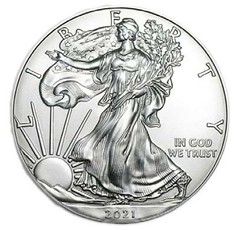 Recently I met with a friend of mine who collects U.S. Silver Eagles by date, mint, and variety. Most people, collectors or otherwise I believe collect Silver Eagles, or for that matter other silver bullion issues for their silver content first, and then possibly, by their designs. Many countries or private mints produce many issues with a myriad of designs. Again, most are valued at their silver content or a slight premium above melt.
Recently I met with a friend of mine who collects U.S. Silver Eagles by date, mint, and variety. Most people, collectors or otherwise I believe collect Silver Eagles, or for that matter other silver bullion issues for their silver content first, and then possibly, by their designs. Many countries or private mints produce many issues with a myriad of designs. Again, most are valued at their silver content or a slight premium above melt.
My friend had let his collection lapse for several years and wanted help inventorying what he had, and what was needed to complete his collection. We sat down with the current Red Book, the 3rd edition of the Whitman book published in 2017/18 on American Silver Eagles,
and several price lists. The announced 4th edition will be available later this month.
DR. FREDERICK H. ROSE GOLD MEDALS
Two interesting and important medals were sold in the Heritage 2022 January FUN sale of Part V of the Alan V. Weinberg Collection. -Editor
INDIAN MUTINY MEDALS
Dix Noonan Webb is offering an interesting group of Indian Mutiny medals, including a Victoria Cross. Here's the press release. -Editor
The outstanding Indian Mutiny V.C. group of six awarded to Private Patrick Donohoe of the 9th Lancers, who at the Battle of Bolondshuhur on September 28, 1857, went to the aid of his severely wounded officer, will be offered by Dix Noonan Webb in their auction of Orders, Decorations, Medals and Militaria on Wednesday, January 26, 2022. Estimated to fetch £140,000-180,000, the group has not been sold on the open market for over 100 years and is being sold by an Overseas collector.
LONDON BLITZ GEORGE CROSS
Here's another rare and historically important medal group offered by Dix Noonan Webb. -Editor
An extremely rare, if not unique George Cross that was presented in 1940 for bomb disposal during the London Blitz will be offered by Dix Noonan Webb in their auction of Orders, Decorations, Medals and Militaria on Wednesday, January 26, 2022. Estimated to fetch £30,000-50,000, it is being sold by the recipient's family.
The group of five was awarded to Sub-Lieutenant J. B. P. Duppa-Miller, Royal Naval Volunteer Reserve, who was awarded the George Cross for his courage and skill in disarming a highly sensitive and dangerous magnetic mine in Barking Creek on September 23, 1940 during the Battle of Britain.
1972 DEMOCRATIC CONVENTION COIN
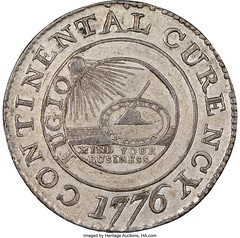 This spellcheck-challenged post on CoinTalk caught my eye recently. The 1972 Democratic convention item (is it a token or a medal?) has a design that reminds me more than a little of the Continental dollar. Not a bad design. Is anyone familiar with these?
-Editor
This spellcheck-challenged post on CoinTalk caught my eye recently. The 1972 Democratic convention item (is it a token or a medal?) has a design that reminds me more than a little of the Continental dollar. Not a bad design. Is anyone familiar with these?
-Editor
An interesting "token" with an odder "pedigree" 1st.. and most obvious it is a momento minted for the 1972 democratic convention in Miami. These coins were part of the early "recycleing" push in politics.. the coins are made from melted down crome/steel bumbers from detroit and then themselves cromed (poorly lol) they are 38.6mm the same size and thickness as a 1965 church hill crown
THE HISTORY OF INFLATION
One of my favorite U.S. historians is John Steele Gordon. He published a concise article this week on the history of a topic much in the news today - inflation. Here's an excerpt - see the complete article online. -Editor
 Money is just a commodity, no different than petroleum or legal services. Thus it can rise and fall in price. What makes money unique among commodities is that it is the only commodity that is universally accepted in exchange for every other commodity. That's why we have a special term for a fall in the price of money. We call it inflation.
Money is just a commodity, no different than petroleum or legal services. Thus it can rise and fall in price. What makes money unique among commodities is that it is the only commodity that is universally accepted in exchange for every other commodity. That's why we have a special term for a fall in the price of money. We call it inflation.
Inflation is almost as old as money itself (coins date to about 650 BC). When Roman emperors began debasing their coinage, prices rose commensurately. The vast influx of gold and silver into Europe from the New World after the Spanish conquest caused about a 400 percent inflation over the course of the sixteenth century.
FEATURED WEB SITE: NUMISTIKA
This week's Featured Web Site is Nukistika, an online library of numismatic literature on Russian, Ancient Greek, Roman and World coins.
Old Books Library with over 200 titles to choose from in numismatic section only, numistika.com is a perfect place to start your research. Here you can find some valuable references and a wide range of materials, from some entertaining reading to the more specific and rare research works, which may satisfy interests of collectors and numismatists from beginners and to museum specialists.
Russian section is divided into several parts. Imperial Period (from Peter I to 1917) includes material on coins, medals, seals etc., and a few related works go into Soviet period. It contains a large body of works, thus, it is further divided into parts that host Biographies, General Works (history, technology, etc.), Descriptive and Auction Sale Catalogs. Early Russian Period (coins and medals) also contains a very comprehensive collection. A separate "History" part that is further divided to include general history from Russian ancient times to Nicholas II, history of a specific Monarch's rule, Heraldry and Classic works of Russian writers. The main focus of this site is Russian Numismatics, History and Literature, and as such, it enjoyed a full-bodied grows with all the additional materials and works submitted by Mr. V. Arefiev.
Ancient Greek, Roman and World coins sections also have some interesting materials and are worthy of visiting.
Presented books and other works are in different languages, but mainly in English, Russian, German, French, Latin, etc. I hope that this resource will be of help to numismatic community world wide.

